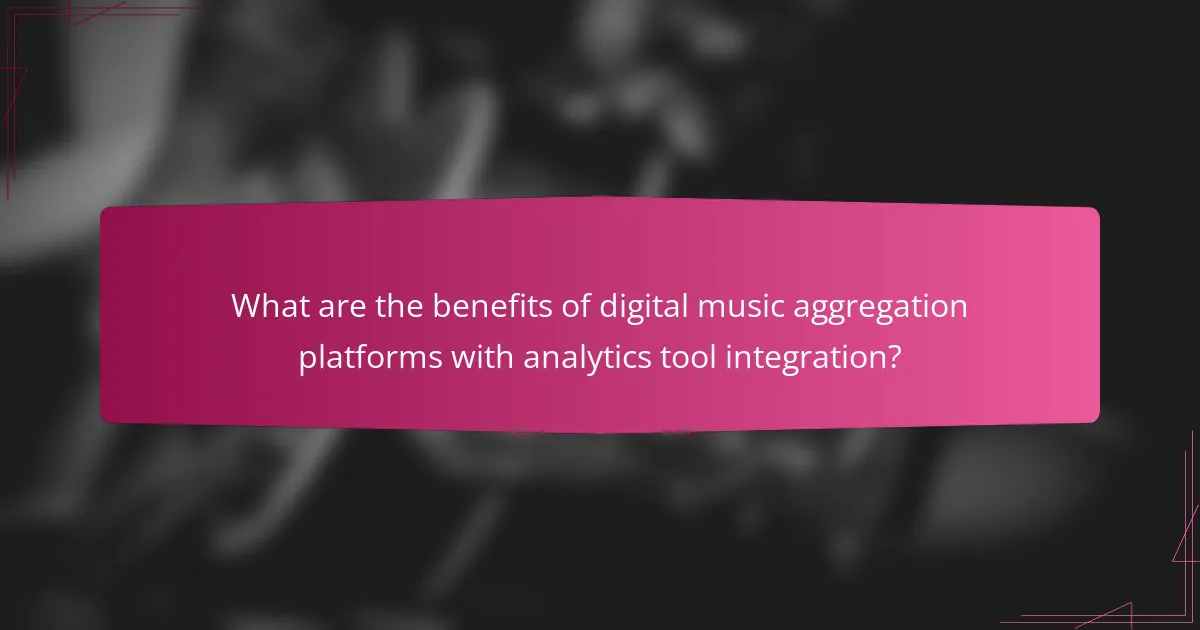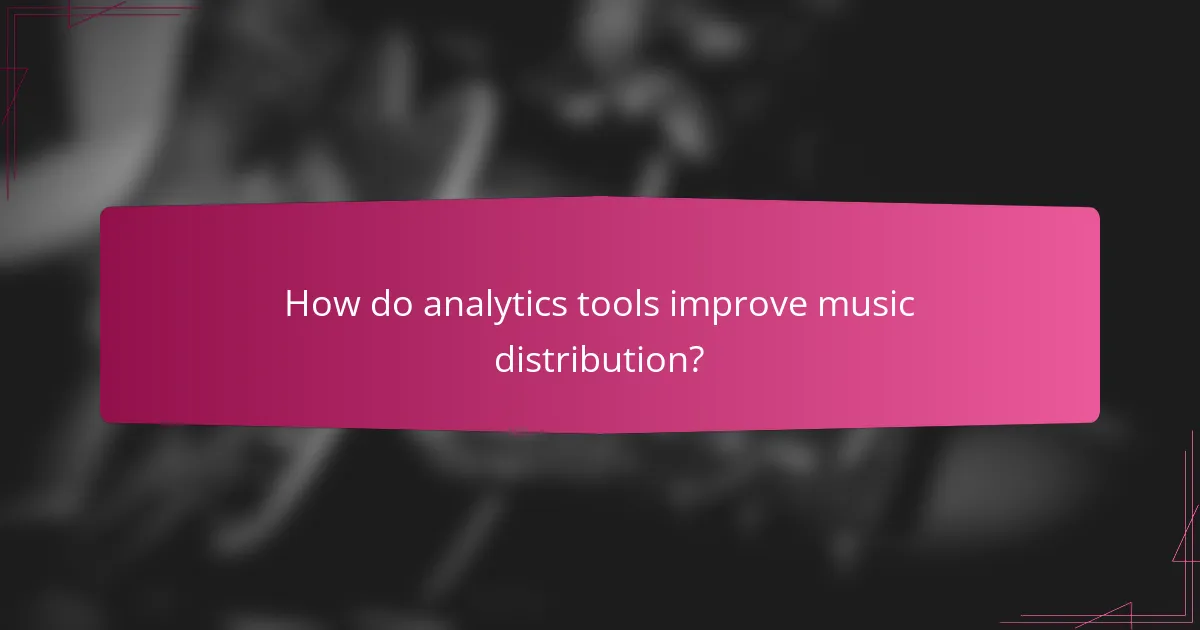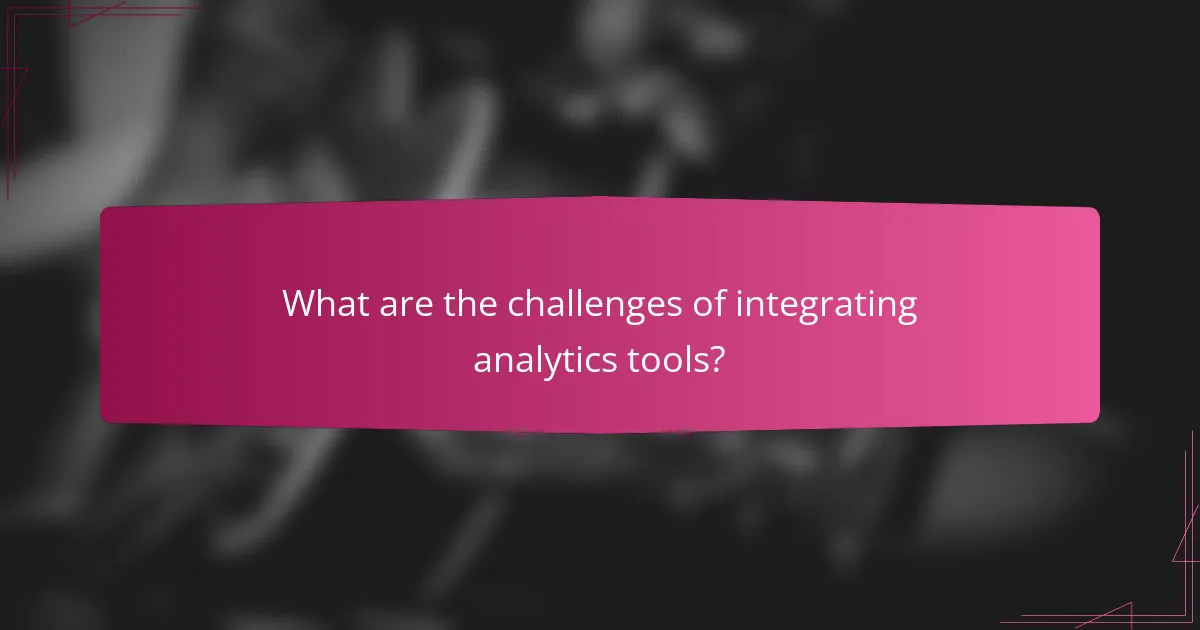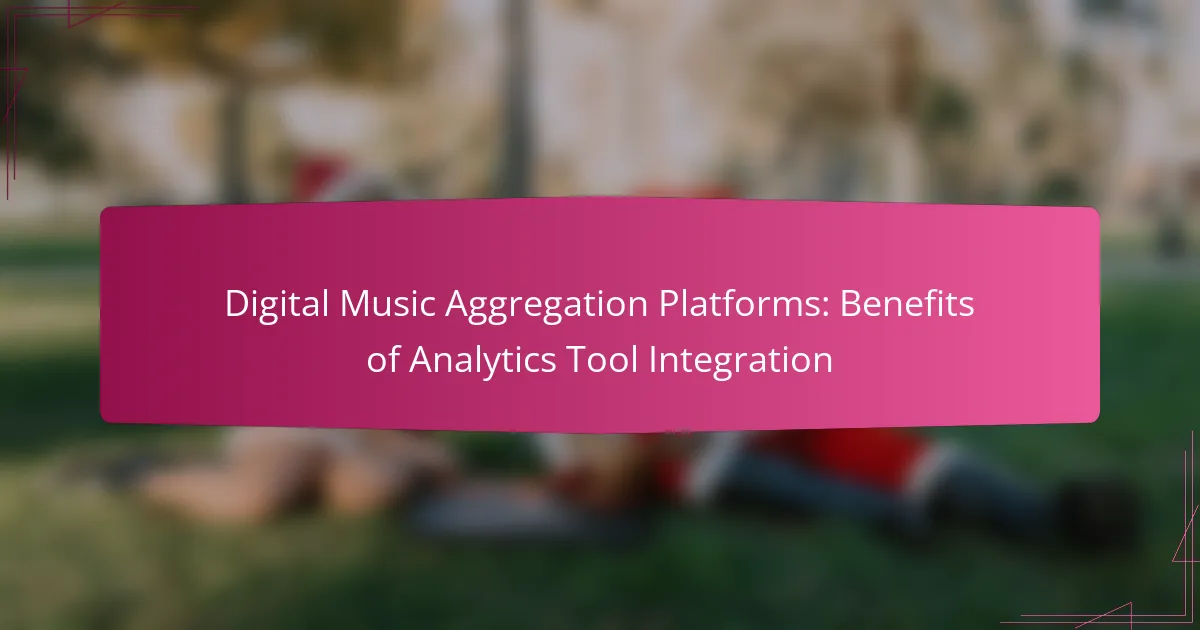Digital music aggregation platforms that integrate analytics tools empower artists and labels by providing crucial insights into their music’s performance and audience engagement. This integration not only streamlines distribution processes but also enhances decision-making and targeting, ultimately creating new revenue opportunities. By leveraging valuable data, musicians can optimize their marketing strategies and better understand their audience, leading to increased revenue and growth.

What are the benefits of digital music aggregation platforms with analytics tool integration?
Digital music aggregation platforms with analytics tool integration offer artists and labels valuable insights into their music’s performance and audience engagement. These tools enhance decision-making, improve targeting, and create new revenue opportunities while streamlining distribution processes.
Enhanced data-driven decision making
Integrating analytics tools allows music professionals to make informed decisions based on real data rather than assumptions. By analyzing trends in listener behavior, sales, and streaming patterns, artists can tailor their marketing strategies effectively.
For instance, if analytics reveal that a particular song performs well in specific regions, artists can focus their promotional efforts there, optimizing their resources for maximum impact.
Improved audience targeting
Analytics tools provide detailed demographic information about listeners, enabling better audience targeting. Understanding who listens to their music allows artists to craft personalized marketing campaigns that resonate with specific groups.
For example, if an artist discovers a significant following among younger audiences on social media platforms, they can create targeted ads or content that appeals directly to that demographic, increasing engagement and loyalty.
Increased revenue opportunities
With insights from analytics, artists can identify new revenue streams and optimize existing ones. By understanding which songs or genres generate the most income, they can prioritize their efforts accordingly.
Additionally, analytics can help in negotiating better deals with brands or sponsors by providing concrete data on audience reach and engagement, leading to potentially higher earnings.
Streamlined distribution processes
Analytics integration can simplify the distribution of music across various platforms. By tracking performance metrics, artists can determine the most effective channels for their releases and adjust their distribution strategies accordingly.
This streamlined approach minimizes wasted effort and ensures that music reaches the right audiences at the right time, enhancing overall efficiency in the distribution process.
Real-time performance tracking
Real-time analytics allow artists and labels to monitor their music’s performance as it happens. This immediate feedback enables quick adjustments to marketing strategies or promotional efforts based on current trends.
For example, if a song suddenly gains traction on a streaming service, artists can capitalize on that momentum by increasing promotional activities or scheduling live performances to engage with their audience directly.

How do analytics tools improve music distribution?
Analytics tools enhance music distribution by providing valuable data that informs decision-making and strategy. They help artists and labels understand their audience better, optimize marketing efforts, and ultimately increase revenue through targeted actions.
Insights on listener demographics
Analytics tools offer insights into listener demographics, including age, gender, location, and listening habits. By understanding who their audience is, artists can tailor their music and marketing strategies to better resonate with specific groups.
For example, if analytics reveal a significant portion of listeners are aged 18-24 in urban areas, artists can focus promotional efforts on platforms popular with that demographic, such as social media channels or live events in those cities.
Analysis of streaming trends
Streaming trend analysis allows artists and labels to track which songs are gaining traction and how listener preferences evolve over time. This data can reveal peak listening times, popular playlists, and the impact of promotional campaigns.
By identifying trends, artists can adjust their release schedules and marketing tactics. For instance, if a particular genre sees a surge in popularity, an artist might consider releasing music that aligns with that trend to capitalize on the increased interest.
Performance metrics for marketing campaigns
Performance metrics from analytics tools help assess the effectiveness of marketing campaigns by tracking engagement rates, conversion rates, and return on investment (ROI). Understanding these metrics enables artists to refine their promotional strategies for better results.
For example, if a campaign targeting a specific demographic shows low engagement, artists can experiment with different messaging or platforms to improve reach. Regularly reviewing these metrics ensures that marketing efforts remain aligned with audience preferences and maximize impact.

Which digital music aggregation platforms offer analytics integration?
Several digital music aggregation platforms provide integrated analytics tools to help artists track their performance and audience engagement. These platforms allow musicians to access valuable data, enabling them to make informed decisions about their marketing and distribution strategies.
DistroKid
DistroKid offers an analytics integration that provides artists with insights into their streaming performance across various platforms. Users can view metrics such as total streams, revenue generated, and geographic data about their listeners. This information can help artists tailor their promotional efforts to specific regions or demographics.
Additionally, DistroKid’s user-friendly dashboard allows for easy navigation and quick access to key performance indicators. Artists can track their progress over time, making it easier to identify trends and adjust their strategies accordingly.
CD Baby
CD Baby features an analytics tool that gives artists detailed reports on their music’s performance. The platform provides insights into sales, streaming statistics, and even fan demographics. This data is crucial for artists looking to understand their audience better and optimize their marketing efforts.
CD Baby also offers a unique feature called “Fan Insights,” which helps artists connect with their listeners by providing information on where their fans are located and how they engage with the music. This can inform decisions on touring and promotional campaigns.
TuneCore
TuneCore includes robust analytics capabilities that allow artists to monitor their music’s performance across multiple platforms. Users can access data on sales, streams, and even social media engagement, providing a comprehensive view of their reach and impact. This information is essential for artists aiming to maximize their revenue and audience engagement.
Moreover, TuneCore’s analytics dashboard is designed to be intuitive, making it easy for artists to interpret their data. By regularly reviewing these analytics, musicians can make strategic decisions about future releases and marketing initiatives, ensuring they stay connected with their audience.

What features should you look for in analytics tools?
When selecting analytics tools for digital music aggregation platforms, prioritize features that enhance usability and provide actionable insights. Key aspects include user-friendly dashboards, customizable reporting options, and robust integration capabilities with other platforms.
User-friendly dashboards
User-friendly dashboards are essential for quickly interpreting data without extensive training. Look for interfaces that present key metrics visually, using graphs and charts to highlight trends and performance indicators. A good dashboard should allow users to navigate easily and focus on the most relevant data points.
For instance, a dashboard that displays streaming counts, revenue breakdowns, and audience demographics at a glance can help artists and managers make informed decisions rapidly. Ensure that the dashboard can be tailored to display the metrics that matter most to your specific needs.
Customizable reporting options
Customizable reporting options enable users to generate reports that align with their unique objectives. This feature allows you to select specific metrics, timeframes, and formats, ensuring that the reports are relevant and actionable. Consider tools that offer templates as well as the flexibility to create reports from scratch.
For example, if you want to analyze the performance of a new release over a quarter, the ability to customize the report to focus on streaming numbers, geographical performance, and revenue can provide valuable insights. Look for options that allow exporting reports in various formats, such as PDF or Excel, for easy sharing.
Integration capabilities with other platforms
Integration capabilities are crucial for streamlining workflows and enhancing data analysis. Choose analytics tools that can connect seamlessly with other platforms you use, such as social media, email marketing, and financial software. This connectivity allows for a comprehensive view of your music’s performance across different channels.
For instance, integrating your analytics tool with a social media platform can help you correlate engagement metrics with streaming data, providing insights into how marketing efforts influence listener behavior. Ensure the tool supports popular APIs and offers easy setup processes to maximize its utility.

How can artists leverage analytics for growth?
Artists can leverage analytics to drive growth by gaining insights into their music’s performance and audience engagement. By understanding which tracks resonate with listeners and how to effectively market their music, artists can make informed decisions to enhance their careers.
Identifying successful tracks
Analytics tools allow artists to track streaming numbers, downloads, and listener demographics, helping them identify which tracks perform best. By analyzing this data, artists can focus on promoting their most popular songs and consider similar styles or themes for future releases.
For example, if a particular track receives significantly more streams compared to others, it may indicate a successful sound or marketing strategy. Artists should regularly review these metrics to stay attuned to their audience’s preferences.
Optimizing marketing strategies
With analytics, artists can refine their marketing strategies based on data-driven insights. By understanding where their listeners are located and which platforms they use, artists can tailor their promotional efforts to specific regions or demographics.
For instance, if analytics show a spike in listeners from a particular city, artists can plan targeted social media campaigns or live performances in that area. This approach maximizes engagement and can lead to increased ticket sales and merchandise revenue.
Engaging with fans effectively
Analytics can help artists engage with their fans more effectively by providing insights into listener behavior and preferences. By monitoring social media interactions and streaming habits, artists can create content that resonates with their audience.
For example, if analytics reveal that fans are more active during certain times of the day, artists can schedule posts or live streams accordingly. Additionally, using data to personalize interactions, such as sending exclusive offers to top listeners, can strengthen fan loyalty and enhance community building.

What are the challenges of integrating analytics tools?
Integrating analytics tools into digital music aggregation platforms presents several challenges, including data compatibility, user interface complexity, and the need for real-time data processing. These hurdles can hinder effective analysis and decision-making for music distributors and artists.
Data Compatibility Issues
Data compatibility is a significant challenge when integrating analytics tools. Different platforms may use varying data formats, making it difficult to consolidate information. Ensuring that all data sources can communicate effectively often requires additional development work and ongoing maintenance.
User Interface Complexity
The complexity of user interfaces can pose a barrier to effective analytics tool integration. If the analytics tools are not user-friendly, stakeholders may struggle to interpret the data. Simplifying the interface and providing training can help users navigate the analytics more effectively.
Real-Time Data Processing Needs
Real-time data processing is crucial for making timely decisions in the fast-paced music industry. However, integrating analytics tools that can handle real-time data can be technically demanding and resource-intensive. Investing in robust infrastructure and ensuring proper data flow is essential for achieving this capability.
